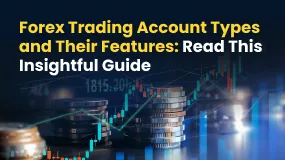ALIBABA STAYS BELOW A DOWNSIDE RESISTANCE LINE
Abstract: Alibaba is China's — and by some measures, the world's — biggest online commerce company. Its three main sites — Taobao, Tmall and Alibaba.com — have hundreds of millions of users, and host millions of merchants and businesses. Alibaba handles more business than any other e-commerce company.

Alibaba is China's — and by some measures, the world's — biggest online commerce company. Its three main sites — Taobao, Tmall and Alibaba.com — have hundreds of millions of users, and host millions of merchants and businesses. Alibaba handles more business than any other e-commerce company.
The Alibaba stock (NYSE: BABA) traded quietly the last few days, staying slightly above the 152.50 support zone, marked by the low of August 23rd. Overall though, it stays below the downside resistance line drawn from the peak of October 27th, 2020, and thus, we would consider the bigger picture to be negative.
Alibaba stock may return somehow, but even if does so, it could reach high resistance close to the aforementioned downside resistance line. And this can probably result in another turn of selling, and another test near the low of October 4th, at 137.95. But if there is no interest in the stock, even at that price, then a dip lower could challenge the 129.45 zone, which give support back on October 30th, December 24th, 2018, and January 3rd, 2019. Also another break, below 129.45, could carry more bearish implications and perhaps observe scope for declines towards the low of May 18th, 2017, at114.25. It can also be observed fr the daily oscillators, that the RSI, even though slightly below 50, has turned up again, while the MACD stays below both its zero and trigger lines. Each of the indicators detect negative momentum, but since the the RSI was found to turned up adds to the idea of a small bounce in the short run before the next negative leg.
To begins inspecting the potential positive reversal, we nee to observe a break above the 183.00 zone, leveled by the high of October 19th. And This will not only confirm the next coming higher high, but also the break above the downside line taken from the peak of October 27th, 2020. We may also expect the next stop to be the high of August 4th, at 203.75, the break of which could allow expansion towards the 230.55 zone, which provided resistance between June 25th and July 1st.
Read more

A Guide to Determining the Optimum Forex Leverage
Want to gain a wider forex market position control by investing a minimal amount? Consider using leverage in forex. It implies using borrowed funds to raise your trading position more than your cash balance can let you do it. Forex traders usually employ leverage to churn out profits from relatively small currency pair price changes. However, there is a double-edged sword with leverage since it can multiply profits as well as losses. Therefore, using leverage in the right amount is key for traders. Forex market leverage can be 50:1 to 100:1 or more, which remains significantly greater than the 2: leverage usually offered in equities and 15:1 leverage in futures.

Slippage in Forex Explained: Key Facts to Improve Your Trading Strategy
Have you witnessed a difference between the expected price of a trade and the price at which it is executed in real time? This might be due to slippage, which can happen at any time. However, it prevails mostly when the market remains highly volatile. At the same time, it can also happen during large order executions. Read on to know more about slippage, its impacts, and the strategies to rein in adverse effects.

Forex Trading Account Types and Their Features: Read This Insightful Guide
Want to open a forex account to enjoy the thrill of compounding returns? You should first know the various forex trading account types. Choosing the right option from the list of forex accounts is critical to experiencing a hassle-free and successful trading journey. Forex brokers design trading accounts based on your needs, trading experience, and financial goals. Therefore, understanding each forex trading account type and its key features becomes essential.. This will help you make the right choice. In this article, we have discussed everything about forex accounts. Take a look!

Crypto, Euro, Yuan: Still No Dollar Killer
Despite frequent “de-dollarization” headlines, the U.S. dollar remains unrivaled due to unmatched market depth, global usability, and trusted legal/institutional frameworks. Crypto and other currencies (euro, yuan) lack the stability, convertibility, and infrastructure required to replace the USD, while the Fed’s credibility and the scale of U.S. financial markets continue to anchor demand. Bottom line: no alternative currently offers a complete, credible substitute for the dollar’s global role.
WikiFX Broker
Latest News
DNA Markets Review 2025: Is This Broker Regulated and Safe?
Traders Flag DUHANI as a Scam Forex Broker: Withdrawal Denials, Account Termination & False Promises
Radex Markets Review: Is Radex Markets Regulated?
Dubai’s CFD Broker Boom in 2025: DIFC Leads the Middle East Financial Frontier
How nervous are investors about the stock market?
Elite Night · Cairo – Gathering Wisdom, Empowering Forex Safety through Education
Is BitMart Legit & Safe in 2025? Checkout this BitMart Exchange Review
Smilepayz Officially Listed on WikiFX as a Payment Gateway Provider
tastytrade Not Matching Its Traders’ Taste: Withdrawal Blocks, Account Opening Hassles & More
FCA Opens Retail Access to Crypto ETPs in UK
Rate Calc


